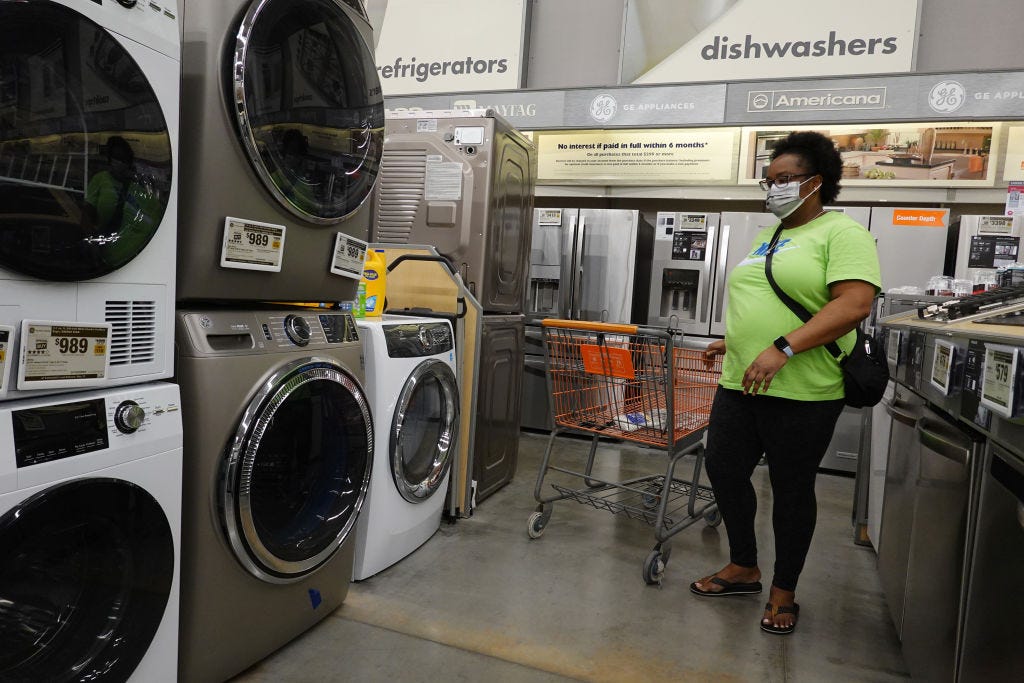
- Faced with limited supplies, companies are favoring the production of premium products.
- A focus on higher-end goods has helped companies protect profits with fewer unit sales.
- The shifting mix means that the average price in certain categories is higher, nudging inflation up.
- See more stories on Insider's business page.
Ever since the invention of the television, comparable models have grown predictably more affordable each year. But the pandemic-induced supply-chain foul ups have broken that trend.
Mike Abt, an electronics retailer in Chicago, told The Wall Street Journal this is the first time he's seen prices go up. Not only that, there are now about half as many models to choose from, and what is available tends to be a more premium version.
"[Manufacturers] figured they would make less [variations], and more of them," Abt said. "It tended to be a little bit more deluxe too: middle to middle-high, less low-priced."
And it's not just TVs, either.
While most of Weber's budget-friendly grills are made in China and imported, the models it makes in the US fetch a higher-price, the company's CEO Chris Scherzinger told the Journal.
And in a July earnings call, Whirlpool told analysts it intended to remain "price/mix positive" through the rest of the year, meaning that it would favor more expensive (and profitable) offerings from its lines of washing machines and KitchenAid products.
Automakers also are steering their limited supplies of semiconductor chips toward the production and sales of their more profitable models. General Motors temporarily suspended new Chevrolet Malibus in favor of higher-margin SUVs, and Ford reported in June that sales of all-electric Mach-E Mustangs had outpaced traditional gas models.
There are a few factors at play behind the shift toward more expensive options.
First, both Home Depot and Lowes both reported in August that shoppers were quite willing to substitute upward for a more feature-rich alternative when the entry level product they were looking for was out of stock. In other words, they were perfectly happy to pay a little extra for that tech-enabled dishwasher when the cheaper tech-free option was not available.
Not only do higher-priced goods tend to command higher profit margins than lower-priced ones, the customers tend to be a bit less price sensitive when markups do happen.
An ongoing study by a Harvard economist found that the prices for things wealthy households buy has gone up more quickly than the prices of things for lower-income shoppers. Inflation is hitting luxury goods more than grocery staples, so far.
It's worth noting this move by manufacturers and retailers has an effect on the category prices the US government uses to measure inflation.
Since there's no separate categories for "fancy washing machines" or "discount televisions," there's no real way to disentangle the effects of actual price increases on specific products versus simply having a larger availability of premium goods in a given category.
Prices are most certainly going up, but what really matters is what you're buying.










